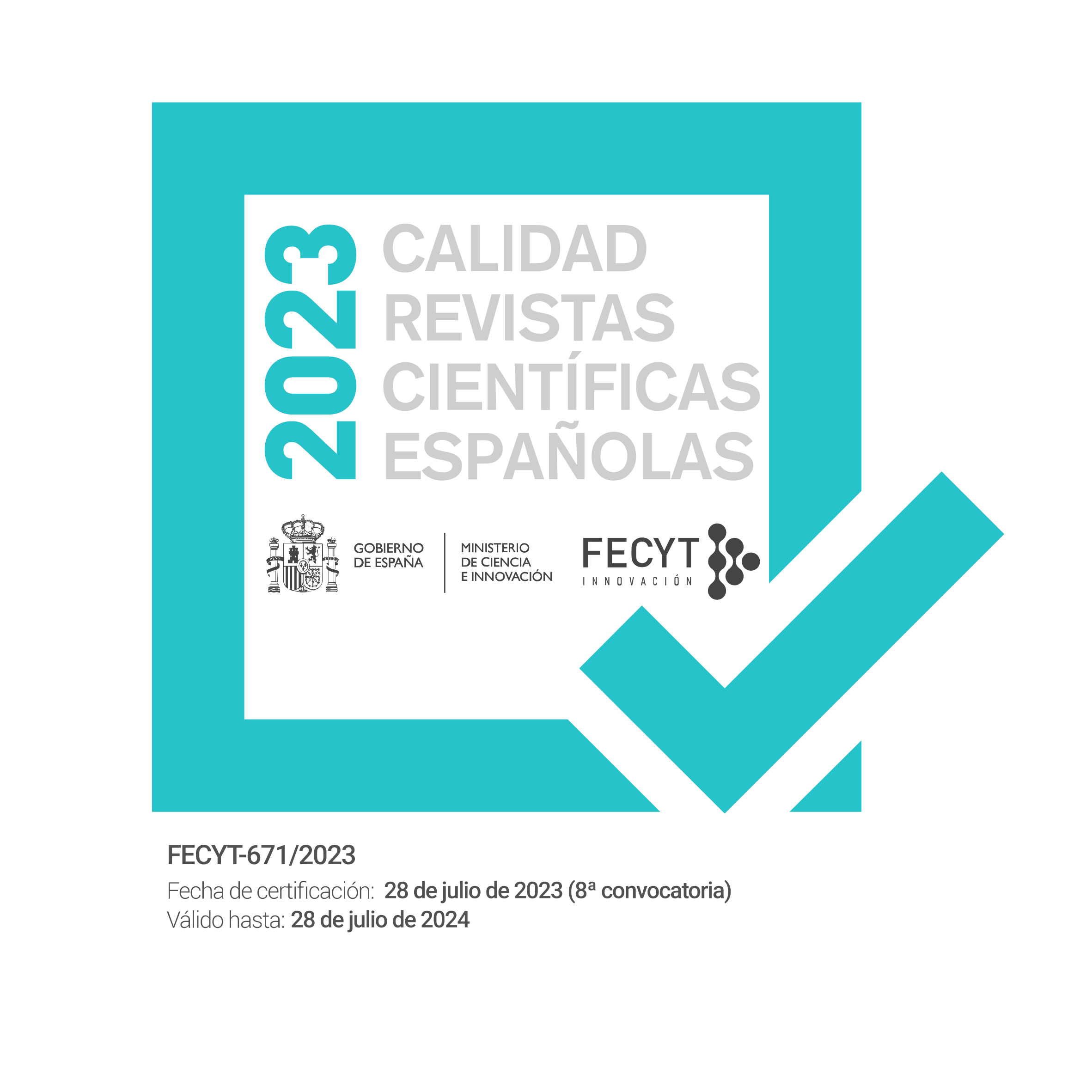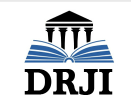The Role of Cultural Heritage in the Creation of a Sense of Belonging among Young Norwegian Turks: Boundary Making and Crossing
DOI:
https://doi.org/10.17561/tahrj.n7.6Keywords:
Belonging, Cultural Heritage, Turkey, Norway, Alevi, SunniAbstract
This paper discusses the importance that cultural heritage has for Norwegians of Turkish decent when it comes to negotiating both their belonging and the concept of home. The role of heritage in making and crossing the boundaries of ethnicity is also discussed here. I argue that Norwegian Turks have developed a multi-layered sense of belonging based on the identification with groups and places located both in Turkey and in Norway. They participate in Norwegian society while identifying themselves as Turks and negotiations of cultural heritage contribute to the preservation of consistent image of themselves as they adopt common Norwegian lifestyles.
References
ADRIAENS, F. (2014). “‘Diaspora girls doing identities’: Creating ideal television programmes and narratives of the self”. European Journal of Cultural Studies, 17(2), pp. 101-117. https://doi.org/10.1177/1367549413508096
AHMED, S. (1999). “Home and away: Narratives of migration and estrangement”. International Journal of Cultural Studies, 2(3), pp. 329-347. https://doi.org/10.1177/136787799900200303
AKÇAM, T. (2012). The Young Turks’ crime against humanity: The Armenian genocide and ethnic cleansing in the Ottoman Empire, Princeton University Press, Princeton.
AKKERMAN, T. & Hagelund, A. (2007). ‘“Women and children first!” Anti-immigration parties and gender in Norway and the Netherlands’, Patterns of Prejudice, 41(2), pp. 197–214, https://doi.org/10.1080/00313220701265569
ALGHASI, S., ERIKSEN, T. H. &GHORASHI, H.(2009).Paradoxes of cultural recognition: Perspectives from northern Europe, Ashgate Publishing Ltd, Farnham.
ANDERSSON, M. (2012). “The debate about multicultural Norway before and after 22 July 2011”. Identities, 19(4), pp. 418-427.
https://doi.org/10.1080/1070289X.2012.684442
ANTHIAS, F. (2016). “Interconnecting boundaries of identity and belonging and hierarchy-making within transnational mobility studies: Framing inequalities”. Current Sociology,64(2),pp. 172-190.
https://doi.org/10.1177/0011392115614780
BANGSTAD, S. (2011). “The morality police are coming! Muslims in Norway's media discourses (Respond to this article at http://www.therai.org.uk/at/debate)”. Anthropology Today, 27(5), pp. 3-7. https://doi.org/10.1111/j.1467-8322.2011.00825.x
BARTH, F. (1969). Ethnic groups and boundaries: The social organization of culture, Universitetsforlaget, Oslo.
BARTH, F. (1994). ‘Enduring and emerging issues in the analysis of ethnicity’, in H. VERMEULEN & C. GOVERS (eds), The anthropology of ethnicity: Beyond ‘ethnic groups and boundaries’, Het Spinhuis, Amsterdam,pp. 11–32.
BAUMANN, G. (1999). The multicultural riddle: Rethinking national, ethnic, and religious identities, Routledge, New York.
BLOM, S. (1997). ‘Bokonsentrasjon blant innvandrere i Oslo’, in BROX,O.(ed), Tett eller Spredt? Om innvandrernes bosetninger i Norge,Tano Aschehoug, Norway,pp. 44–62
BLOMMAERT, J., COLLINS, J., & SLEMBROUCK, S. (2005). “Polycentricity and interactional regimes in ‘global neighborhoods’”. Ethnography, 6(2), pp. 205-235. https://doi.org/10.1177/1466138105057557
BOLT, G., & VAN KEMPEN, R. (2002). “Moving Up or Moving Down? Housing Careers of Turks and Moroccans in Utrecht, the Netherlands”. Housing Studies, 17(3), pp. 401-422. https://doi.org/10.1080/02673030220134926
BROCHMANN, G. & KJELDSTADLI, K. (2008).A history of immigration: The case of Norway 900-2000, Universitetsforlaget, Oslo.
ÇAĞLAR, A. (2001).“Constraining metaphors and the transnationalisation of spaces in Berlin”. Journal of Ethnic and Migration Studies, 27(4), pp. 601-613. https://doi.org/10.1080/13691830120090403
ÇAĞLAR, A. (2004). “Mediascapes, Advertisement Industries and Cosmopolitan Transformations: German Turks in Germany”. New German Critique (92), pp. 39-61.
CLARKE, A. E. (2005).Situational analysis: Grounded theory after the postmodern turn, Sage Publications, California. https://doi.org/10.4135/9781412985833
CLARKE, A. E. (2009). “From grounded theory to situational analysis: What’s new? Why? How?”, in MORSE, J. M. STERN, P. N.. CORBIN, J. BOWERS, B. CHARMAZ, K.& CLARKE A. E. (eds), Developing grounded theory: The second generation, Developing qualitative inquiry, Left Coast Press, California.pp. 194–221
COHEN, A. P. (1994). “Boundaries of consciousness, consciousness of boundaries: Critical questions for anthropology”, in VERMEULEN H. & GOVERS C. (eds), The anthropology of ethnicity: Beyond ‘ethnic groups and boundaries’, Studies on migration & ethnicity, Het Spinhuis, Amsterdam,pp. 59–80.
DE VALK, H. A. G., & LIEFBROER, A. C. (2007).“Parental Influence On Union Formation Preferences Among Turkish, Moroccan, and Dutch Adolescents in the Netherlands”. Journal of Cross-Cultural Psychology, 38(4), pp. 487-505. https://doi.org/10.1177/0022022107302316
DRAMMEN KOMMUNE, n.d. (2015) Fjell – en drabantby i Drammen, accessed January 25, 2015, from https://www.drammen.kommune.no/Documents/Politikk og lokaldemokrati/Presentasjoner/4 Fjell 2020 - Områdeutvikling.pdf.
DRESSLER, M.(2008). “Religio-secular metamorphoses: The re-making of Turkish Alevism”, Journal of the American Academy of Religion, 76, pp. 280–311. https://doi.org/10.1093/jaarel/lfn033
GALIP, O. B. (2015).Imagining Kurdistan. Identity, Culture and Society, I. B. Tauris, London and New York.
GESCHIERE, P. (2009).The Perils of Belonging: Autochthony, Citizenship, and Exclusion in Europe and Africa, The University of Chicago Press. Chicago and London. https://doi.org/10.7208/chicago/9780226289663.001.0001
GIDDENS, A. (1991)Modernity and self-identity: self and society in the late modern age, Polity Press, Cambridge.
GRAHAM, B. (2002) “Heritage as knowledge: Capital or culture?”, Urban Studies, 39(5-6), pp. 1003–1017. https://doi.org/10.1080/00420980220128426
GÜNEY, S., KABAŞ, B., & PEKMAN, C. (2016).“The Existential Struggle of Second-Generation Turkish Immigrants in Kreuzberg: Answering Spatiotemporal Change”. Space and Culture, published online before print (May 8, 2016).
GUPTA, A., & FERGUSON, J. (1992). “Beyond "Culture": Space, Identity, and the Politics of Difference”. Cultural Anthropology, 7(1), pp. 6-23.
https://doi.org/10.1525/can.1992.7.1.02a00020
HAGELUND, A. (2002). “Problematizing culture: Discourses on integration in Norway”, Journal of International Migration and Integration / Revue de l’integration et de la migration internationale, 3(3), pp. 401–415.
https://doi.org/10.1007/s12134-002-1022-7
HAGELUND, A. (2003). The importance of being decent: Political discourse on immigration in Norway, 1970-2002, Unipax, Oslo.
HARPER, D. (2012). Visual Sociology, Taylor & Francis, New York.
HØYDAHL, E. (2014). Innvandrere og norskfødte med innvandrerforeldre, SSB, Oslo.
İÇDUYGU, A. & SONER, B. A. (2006). “Turkish minority rights regime: Between difference and equality”, Middle Eastern Studies, 42, pp. 447–468. https://doi.org/10.1080/00263200500521370
IÇDUYGU, A. & TEKELIOGLU, O. (1995). “Turks in the Nordic countries: An overview”, in GÖKALP, A. KASTORYANO, R.& DE TAPIAS. (eds), Turcs d’Europe..., et d'ailleurs, l’ERISM, Paris, pp. 205–214.
İÇDUYGU, A. (2009). “UNDP report: International migration and human development in Turkey”, Human Development Reports, no. 52.
İÇDUYGU, A., ÇOLAK, Y. & SOYARIK, N.(1999). “What is the matter with citizenship? A Turkish debate”, Middle Eastern Studies, 35(4), pp. 187–208. https://doi.org/10.1080/00263209908701291
IÇDUYGU, A., TOKTAS, Ş. & SONER, B. A. (2008).“The politics of population in a nation-building process: emigration of non-Muslims from Turkey”, Ethnic and Racial Studies, 31, pp. 358–389. https://doi.org/10.1080/01419870701491937
KAYA, A. (2001). Sicher in Kreuzberg: constructing Diasporas: Turkish-hip-hip youth in Berlin, Transcript, Bielefeld. https://doi.org/10.14361/9783839400715
KAYA, A. (2002). “Aesthetics of diaspora: Contemporary minstrels in Turkish Berlin”, Journal of Ethnic and Migration Studies, 28(1), pp. 43-62.
https://doi.org/10.1080/13691830120103921
KAYA, A. (2007). “German-Turkish Transnational Space: A Separate Space of Their Own”, German Studies Review, 30(3), pp. 483-502.
LÄHDESMÄKI, T., SARESMA, T., HILTUNEN, K., JÄNTTI, S., SÄÄSKILAHTI, N., VALLIUS, A., & AHVENJÄRVI, K. (2016). “Fluidity and flexibility of “belonging”`, Acta Sociologica, 59(3), pp. 233-247.
https://doi.org/10.1177/0001699316633099
MACDONALD, S. (2013). Memorylands: Heritage and identity in Europe today, Taylor & Francis, London.
MCDOWALL, D. (2007). A modern history of the Kurds 3rd edn., I.B Tauris & Co Ltd, London.
MEEKER, M. E. (2002). A nation of empire: The Ottoman legacy of Turkish modernity, University of California Press.
https://doi.org/10.1525/california/9780520225268.001.0001
MELD. St. (2012). En helhetlig integreringspolitikk: Mangfold og fellesskap.
NÆSS, R. (1985). Innvandrere på norske arbeidsplasser. En studie av Tyrkiske og pakistanske innvandreres situasjon på et utvalg arbeidsplasser, Arbeidspsykologisk Institutt, Oslo.
NISTOV, I. (2001). Referential choice in L2 narratives: A study of Turkish adolescent immigrants learning Norwegian. Doctoral dissertation, Department of Linguistics, University of Oslo.
ÖZDALGA, E. (2012). ‘Secularism’, in HEPER M. & SAYARI S. (eds), The Routledge handbook of modern Turkey, Routledge, London.
ÖZYÜREK, E. (2009) ‘“The light of the Alevi fire was lit in Germany and then spread to Turkey”: A transnational debate on the boundaries of Islam’, Turkish Studies, 10, pp. 233–253. https://doi.org/10.1080/14683840902864028
PÉCOUD, A. (2004). “Entrepreneurship and identity: cosmopolitanism and cultural competencies among German‐Turkish businesspeople in Berlin”,Journal of Ethnic and Migration Studies, 30(1), pp. 3-20.
https://doi.org/10.1080/1369183032000170141
PETTERSON, M. (2009). ‘The impact and the quest for a cultural heritage’, in AKMAN, H.& STOKENS, O.(eds), The cultural heritage of the Kurds, BRIC, Center for Development Studies, University of Bergen.
PETZEN, J. (2004). “Home or Homelike?: Turkish Queers Manage Space in Berlin”, Space and Culture, 7(1), pp. 20-32
https://doi.org/10.1177/1206331203256851
PHALET, K., & SWYNGEDOUW, M. (2002). “National identities and representations of citizenship: A comparison of Turks, Moroccans and working-class Belgians in Brussels”, Ethnicities, 2(1), pp. 5-30.
https://doi.org/10.1177/1469682002002001520
RENIERS, G. (2001). “The post-migration survival of traditional marriage patterns: Consanguineous marriage among Turkish and Moroccan migrants in Belgium”, Journal of Comparative Family Studies, 32, pp. 21-44.
ROGSTAD, J. (2009). “Towards a Success Story? Turkish Immigrant Organizations in Norway”, Turkish Studies, 10(2), pp. 277-294.
https://doi.org/10.1080/14683840902864044
SANDRUP, T. (2013). Farfars hus: norsktyrkiske familier : innvandrede utvandrere, PhD Thesis, Universitet i Oslo, Unipub.
SHANKLAND, D. (2007). The Alevis in Turkey: The emergence of a secular Islamic tradition, Routledge Taylor & Francis, London.
SHANKLAND, D. (2012). ‘Islam’, in HEPER M. & SAYARI S. (eds), The Routledge handbook of modern Turkey, Routledge, London.
SOYSAL, L. (2001). “Diversity of Experience, Experience of Diversity: Turkish Migrant Youth Culture in Berlin”, Cultural Dynamics, 13(1), pp. 5-28. https://doi.org/10.1177/092137400101300101
SPIERINGS, B., VAN MELIK, R., & VAN AALST, I. (2016).“Parallel Lives on the Plaza: Young Dutch Women of Turkish and Moroccan Descent and Their Feelings of Comfort and Control on Rotterdam’s Schouwburgplein”, Space and Culture, 19(2), pp. 150-163. https://doi.org/10.1177/1206331215620994
SSB STATISTICS NORWAY. (2015). Immigrants and Norwegian-born to immigrant parents, 1 January 2015, accessed from http://www.ssb.no/en/befolkning/statistikker/innvbef/aar/2015-03-04.
STEINKELLNER, A. & RUSTAD HOLSETER, A. M. (2013). Befolkningens utdanningsnivå, etter spørreundersøkelsen om utdanning fullført i utlandet, Oslo.
STJERNØ COMMITTEE (2008). Mangfold og mestring – Flerspråklige barn, unge og voksne i opplæringssystemet [Diversity and Mastery – Multilingual Children, Young People and Adults in the Education and Training System] NOU 2010:7.
SUNY, R. G. (2015) ‘They can live in the desert but nowhere else’: A history of the Armenian genocide., Princeton University Press, Princeton. https://doi.org/10.1515/9781400865581
TAYLOR, C. (1989) Sources of the self: the making of the modern identity, Cambridge University Press, Cambridge.
TORSET, N. S. (2014). «Kvinner og menn måtte sitte adskilt på islam-seminar på Høgskolen i Oslo og Akershus», Aftenposten.
TÜRKER, E. (2000). Turkish-Norwegian codeswitching: Evidence from intermediate and second generation Turkish immigrants in Norway, PhD thesis, Faculty of Arts, Universitet i Oslo.
TURNER, V. W. (1995). The ritual process: structure and anti-structure, Aldine de Gruyter, New York.
VAN ECK, C. (2002). Purified by Blood: Honour Killings amongst Turks in the Netherlands, Amsterdam University Press, Amsterdam.
VESTEL, V. (2009). “Limits of Hybridity Versus Limits of Tradition?: A Semiotics of Cultural Reproduction, Creativity, and Ambivalence among Multicultural Youth in Rudenga, East Side Oslo”, Ethos, 37(4), pp. 466-488. https://doi.org/10.1111/j.1548-1352.2009.01069.x
YUVAL-DAVIS, N. (2006). “Belonging and the politics of belonging”, Patterns of Prejudice, 40, pp. 197–214. https://doi.org/10.1080/00313220600769331
YUVAL-DAVIS, N. (2011). Power, intersectionality and the politics of belonging, Aalborg University, working paper series no. 75.
ZIRH, B. C. (2012). “Following the dead beyond the ‘nation’: a map for transnational Alevi funerary routes from Europe to Turkey”, Ethnic and Racial Studies, 35(10), pp. 1758-1774. https://doi.org/10.1080/01419870.2012.659274




























